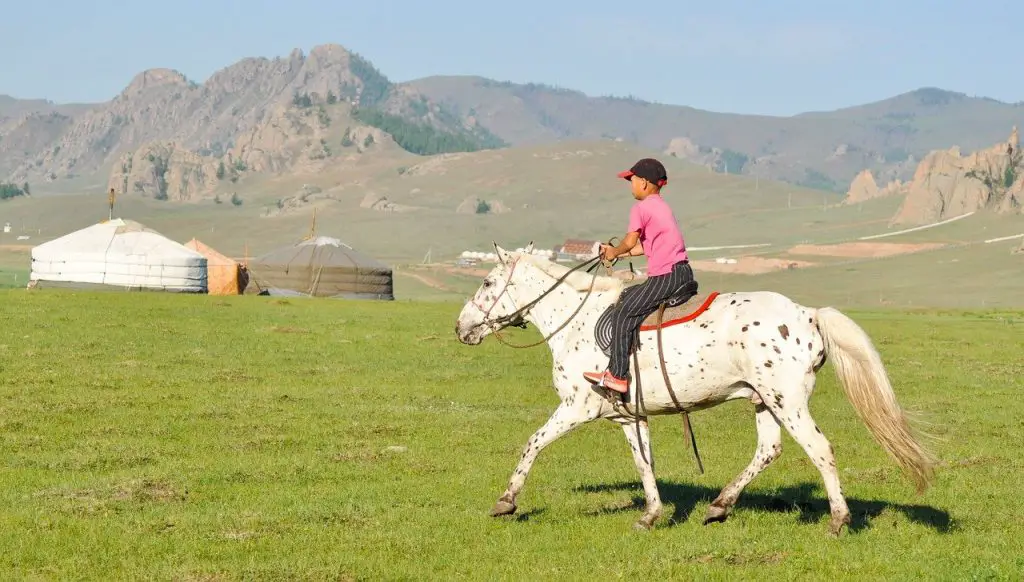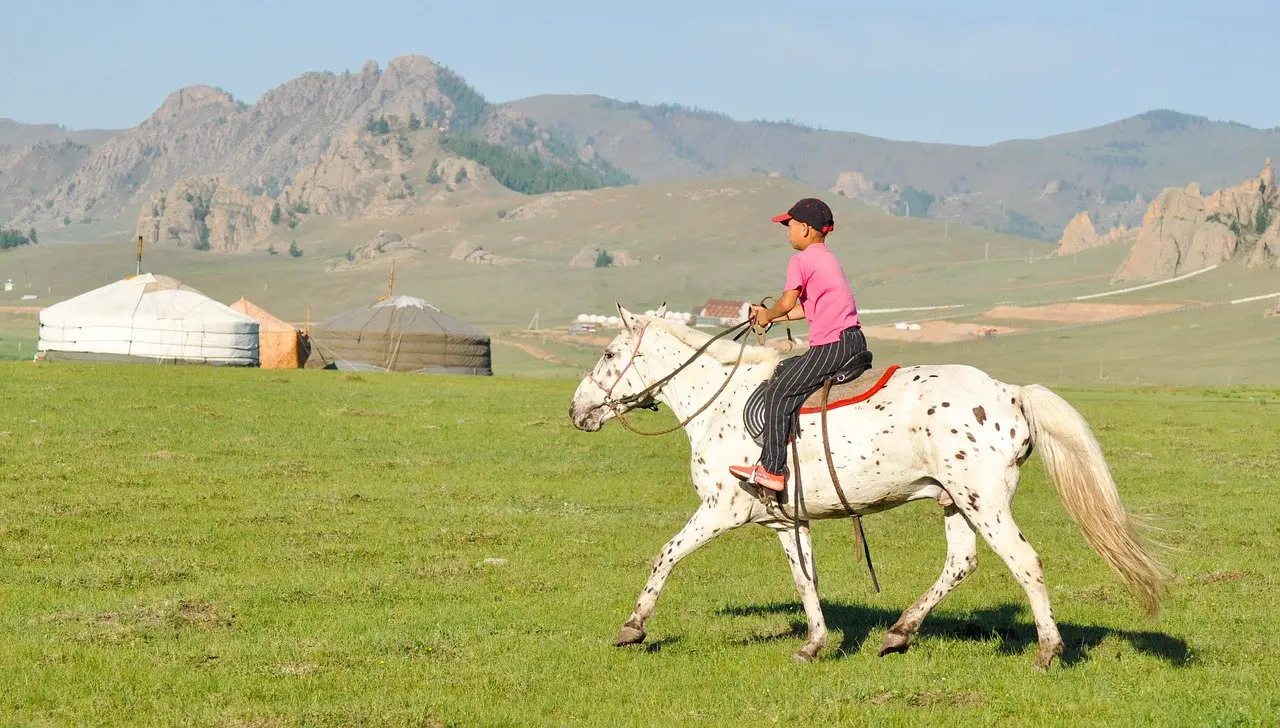Last Updated on February 28, 2022 by Allison Price
This self-help program of a sports psychologist will help you get rid of your riding fears.
Is your romantic bubble about the joy of riding your horse or pursuing a particular aspect of riding burst? Are fear and anxiety now part of your horse-life?
You’re not the only one. As an equestrian psychologist, I have learned that fear and its lower-grade version, anxiety, are two of the most common problems riders face. You might be afraid of being hurt or losing control over your horse. You might be afraid of losing control over your horse or that you will have to replace it with one more manageable. Perhaps you are afraid of failing or disappointing others. Perhaps your biggest fear is the realization that horse ownership isn’t what you imagined.
Whatever the cause, fear can interfere with your enjoyment and satisfaction from horse riding. You may want to have the fun again.
You can learn to manage your riding fear so you can enjoy your time with your horse.
istockphoto.com/davidf
I can help. Let’s assume that you have come to me to get professional help with horse anxiety or fear. As a professional, I will guide you through the 10 steps I use to help riders overcome their fear. You will have a complete set of self-knowledge tools and be ready to deconstruct the fear that is preventing you from completing your “session”.
In normal circumstances, we would meet in my office and I would ask you questions to help us both understand our problems and determine what we want to do. I would take detailed notes for each of us, to help us create a solution.
You’ll need to make your own notes in this instance, so be sure to have a pen and paper ready. You should resist the temptation to keep track in your head of all the answers. Writing will allow you to gain an understanding of the situation and that is what you need to do when dealing with any problem.
You will need to be reflective about the questions I ask. I’ll give examples from three riders who can help you get started. Let’s begin.
STEP 1: IDENTIFY FEARFUL SITUATIONS. Be as specific as you can about the situations that make you fearful.
Examples:
- Rider #1: Are you afraid to ride horses in groups, particularly in open fields or on narrow trails?
- Rider #2: I was afraid to ride in the trainer’s arena after my horse got me off there.
- Rider #3: Nervous when riding in public, particularly at shows where friends or family are present.
This will allow you to identify and clarify what you need to do. Only by doing this, you will be able to break down your fearful situations into their components and focus on each part. This will help you avoid feeling overwhelmed when riding with other riders, in an arena, or in public. Most riders discover that most of their riding is done within their comfort zones, which helps them to feel more confident.
STEP 2: IDENTIFY FEARED OUTCOMES. If your fearful situation were to happen, write down the outcome you are afraid of. Don’t be vague about what you fear. “I’m afraid that I won’t be able to control the horse” is not enough.
Examples:
- Rider #1: Horses might get excited by other horses. Horse might lose control, become disoriented, or be badly injured. Not unusual to see many of the feared outcomes!
- Rider #2: My trainer might be angry that I don’t have my horse under control. He might make me weep in front of him. Could be the start of another argument with my spouse about whether or not I should keep horse.
- Rider #3: Riders 3 and 4 might be criticised for not performing up to expectations. They may also feel unworthy. You might get stressed trying to entertain your “family groupies”, and you may end up riding poorly. You might not win.
This may be the hardest of the 10 steps. Many riders find it to be. It requires them to face their fears and admit to them. This can require soul searching and the ability look fear in its face. Fears can trigger painful memories from past situations. Many riders tell me their biggest fears are not physical, but emotional. However, if you don’t acknowledge this, your deepest fears may be kept hidden and you won’t be able to effectively deal with them.
Goal Setting Basic Principles
If goals are set up correctly, they can give you a roadmap of your goals. To help your goal serve its purpose, you should state it in a manner that accomplishes the following objectives:
- Your goal should be specific and measurable. An objective such as “I want less fear” is too vague and hard to measure. A better goal would be “Every time I ride my horse in open fields, I will control him using proper use of my reins and legs, as well as my voice, just like I do when I ride in arenas.”
- Your goal should be stated in positive terms. Don’t mention what you won’t or don’t want to do. Your subconscious mind might mistakenly interpret “don’t” for “do”, which could lead to you doing exactly the opposite of what you want.
- Be realistic about your goals. It’s unrealistic to expect that you will never feel fear. However, it is possible to learn to manage fear.
- Write down your goals. Writing allows you to be precise and specific about what you want to achieve.
STEP 3: DO A REALITY CHECK. Write down the real chances of each of your fears coming true.
Examples:
- Rider #1: My horse is very difficult to control so I have a reasonable chance that he will run off with me in the open. He’s able to walk on narrow trails and is not likely to fall over.
- Rider #2: I have been riding horse at home regularly since the incident at trainer’s. Although horse has been difficult for me to control, I haven’t been bucked. It’s unlikely that I would be bucked off at trainer’s again, but control is an issue.
- Rider #3: My parents and friends have only made encouraging remarks about my performances. It’s unlikely that they would express dismay about my future efforts. Their presence makes me anxious so I am more likely to feel stressed at shows.
This alone can reduce your fear if you determine that the chances of a certain outcome actually happening are very slim. However, there are good chances that such an outcome will happen. To reduce these odds, you need to be able to think differently. Rider #1 could, for example, take steps to ensure her horse is in complete control in an arena setting before she ventures out onto open fields. Rider #3 could decrease her anxiety during show time by asking that her family and friends not attend her events until she is able to ride confidently in public.
STEP 4 – IDENTIFY YOUR “FEAR WORRENDERS” Write down the situations and occurrences that make you fear worse or increase your anxiety.
Examples:
- Rider#1: Ride in groups with unpredictable horses; slippery, slippery feet on steep trails.
- Rider#2: Learning from strangers; having my horse behave like a baby before I get on him; riding after a hard day at work.
- Rider #3: My dad pushing me to “go for the blue” before I entered a class. It was a great experience being with top-name riders.
It is important to identify what has made your fear worse for two reasons. It allows you to avoid certain things and gives you the chance to try something else.
Although these ideas seem obvious, I often see motivated and determined riders doing the same thing over and over again in the misguided belief that harder work will make a difference. The truth is that you don’t need to ride when your footing’s good. You can also schedule lessons for non-work days or reinterpret the comments of your parents as support, not pressure.
STEP 5 – IDENTIFY “FEAR REDUCERS” What past experiences have you had that reduces your fear?
Examples:
- Rider #1: Allowing time for your horse to rest before you ride; riding in good weather when the trails are dry and your footing is stable.
- Rider #2: Nothing! I have never been afraid, but I now know that my horse can buck me off, and it’s paralyzing. Talking about my fear helps a bit.
- Rider #3: Competing at events that I and my horse are both good at.
Identify your self-care measures. You could do anything, from taking a walk before riding to spending time with your horse and remembering all details about your last successful ride.
Nichole Chirico
STEP 6 – IDENTIFY YOUR “SELF-CARE MEASURES.” What things that you do to take care of yourself have a positive effect on your ability to deal with your fear/anxiety-producing situations? Anything that has to do with relationships is included.
Examples:
- Rider #1: I need to clear my mind of all non-riding issues before I can ride.
- Rider #2: I go for a quick walk before I start riding; talking with my trainer about what day to work on.
- Rider #3: I spend some time before I show to remember all the details from my last successful ride.
Many believe that the only way to deal with fearful situations is by improving their riding skills. However, how you take care of your body and emotions will have a direct impact on your riding success and the enjoyment you get. You should consider sleep, weight and flexibility, aerobic exercise and relaxation techniques. Also, you need to deal with stress-related issues.

STEP 7: IDENTIFY EARLY WORMING SIGNS of Fear. How can you tell when you are afraid? Write down the physical signs/feelings/thoughts you experience.
Examples:
- Rider 1: I struggle to fall asleep on nights that are not planned.
- Rider #2: I felt a knot in my stomach just before I got back on the horse. Now, whenever I think of lessons, it feels like the same knot; have nagging thoughts about whether or not to go back to lessons.
- Rider #3: Both mind and body seem to be traveling at 100 mph; cannot sit still, want nothing more than to grind their teeth.
It is important to recognize the signs and symptoms of fear early, as fear is easier to manage than waiting for it to get worse.
It’s easier to deal when a voice whispers in your head, “Do you really want to do that?” It’s much easier to deal with a little voice in your head that whispers, “Do I really want to do this?” than one that shouts, “You’re going make a fool out of myself!” Do not take another step! Do not wait for your warning signs to kick in. Take immediate action by using your fear reducers, self-care measures (identified at Steps 5 & 6), and by avoiding your fear worseners, (identified at Step 4). You may also want to consider further study techniques, which I will highlight in Step 10.
STEP 8 – STATE YOUR LONG TERM GOAL. STEP 8: STATE YOUR LONG-TERM GOAL. (Note: Please review the principles of goal setting in the previous page before you start this step. )
Examples:
- Rider 1: My goal is for me to be able ride with a group of 20 riders over terrain that includes open fields, narrow trails, and other riders while enjoying my horse and the surrounding area.
- Rider #2: I want to be able ride in my trainers arena and feel confident and in control no matter what I do.
- Rider #3: I want to feel just as confident riding in public places as I do at home.
To keep you on track, your long-term goal is a guide. This is a common saying, but it’s worth repeating again: Without knowing what your destination is, you can’t get there.
STEP 9: SET YOUR SHORT-TERM GROUND GOALS. You should set short-term goals to help you reach your long-term goal.
Examples:
- Rider 1: Begin your rides with “control check” and longeing sessions; ride with a close friend on narrow trails; lope through open fields with total control of your horse; ride along with two friends with quiet horses on a trail ride that includes open areas; etc.
- Rider #2: Contact trainer to discuss horse behavior at home since the arena incident; make an appointment for trainers to visit me at home to observe my riding; learn a program of exercises to improve control; and schedule lessons at trainer’s arena where I’ll do the same control exercises.
- Rider #3: I will show at a non-rated event in the classes that I am most comfortable in. I only need my best friend to accompany me to a non-rated event in which I plan on competing; I will also be taking regular lessons with family members; etc.
Your short-term goals will be your first step towards achieving your long-term goal. These goals should be achievable and regular. They should also include activities that are easy to do, but then become more difficult. You can feel proud of each achievement and stay motivated by setting short-term goals that relate to your riding-related fears.
STEP 10 – PUTS IT ALL TOGETHER
Take a moment to go back over what you have written in Steps 1 through 9. This will help you to understand the “big picture” in relation to your fears and can also help you refine your short-term goals. This will give you something that you can start to implement today in managing your fear.
You may also want to explore the field of sports psychology by speaking with a specialist or looking at resources such as those in “Where To Learn More.” You’ll be able conquer your fear by learning techniques such as imagery, progressive muscle relaxation and breathing techniques.
Doug is a licensed psychologist with more than 25 years experience. He has a private practice in Pottstown where he helps athletes, families, and other people. He is the 1994 national champion middle-weight endurance rider and the first man to both run and ride the Old Dominion One-Day 100-Mile race. Three 60-minute audiotapes containing sports psychology tips for riders were also written by him. Nobee Kanayama is a freelance illustrator and a Pasadena College of Design graduate. “I drew the riding nightmare,” he says. It’s a psychological representation about how fearful adults can feel and how it can cause them to curl up in fetal positions. “


